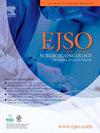A prediction model of pulmonary metastasis risk in pediatric patients with stage IIB osteosarcoma in the long bone of extremities
IF 2.9
2区 医学
Q2 ONCOLOGY
引用次数: 0
Abstract
Introduction
While epiphyseal plates may resist osteosarcoma invasion, the correlation between epiphyseal involvement (EI) and pulmonary metastasis (PM) or prognosis remains unclear, and no PM prediction models specifically target pediatric patients.
Materials and methods
This study enrolled 221 patients (≤14 years) with stage IIB osteosarcoma in the long bone of extremities. Using LASSO and multivariate Cox regression analyses, we identified significant risk factors for PM and prognosis, integrating them into a nomogram and nine machine learning (ML) models. After comprehensive performance evaluation, the optimal model was selected to predict 2-year PM risk, stratifying patients into high- and low-risk groups by median risk score.
Results
EI significantly correlated with increased PM risk and poorer prognosis; however, when tumors did not cross the epiphyseal plate, metastasis incidence and prognosis remained comparable irrespective of the tumor-epiphyseal distance. Key risk factors included EI, elevated alkaline phosphatase (ALP), decreased lactate dehydrogenase (LDH), poor chemotherapy response, and elevated LDH ratio. The Random Forest (RF) model showed optimal predictive performance for risk stratification.
Conclusion
This study establishes the first pediatric-specific PM risk prediction model for osteosarcoma, enabling personalized management, precise prognosis assessment, and optimized resource allocation, thereby demonstrating artificial intelligence's value in biomedical research.
儿童四肢长骨IIB期骨肉瘤肺转移风险的预测模型
虽然骨骺板可以抵抗骨肉瘤的侵袭,但骨骺累及(EI)与肺转移(PM)或预后之间的关系尚不清楚,也没有专门针对儿科患者的肺转移预测模型。材料和方法:本研究招募了221例(≤14岁)四肢长骨IIB期骨肉瘤患者。使用LASSO和多变量Cox回归分析,我们确定了PM和预后的重要危险因素,并将它们整合到nomogram和9个机器学习(ML)模型中。综合绩效评价后,选择最优模型预测2年PM风险,按中位风险评分将患者分为高危组和低危组。结果:EI与PM风险增加、预后差显著相关;然而,当肿瘤没有穿过骨骺板时,无论肿瘤到骨骺的距离如何,转移的发生率和预后都是相似的。关键危险因素包括EI、碱性磷酸酶(ALP)升高、乳酸脱氢酶(LDH)降低、化疗反应差、LDH比值升高。随机森林(RF)模型对风险分层的预测效果最佳。结论:本研究建立了首个骨肉瘤儿科特异性PM风险预测模型,实现了个性化管理、精准预后评估、优化资源配置,体现了人工智能在生物医学研究中的价值。
本文章由计算机程序翻译,如有差异,请以英文原文为准。
求助全文
约1分钟内获得全文
求助全文
来源期刊

Ejso
医学-外科
CiteScore
6.40
自引率
2.60%
发文量
1148
审稿时长
41 days
期刊介绍:
JSO - European Journal of Surgical Oncology ("the Journal of Cancer Surgery") is the Official Journal of the European Society of Surgical Oncology and BASO ~ the Association for Cancer Surgery.
The EJSO aims to advance surgical oncology research and practice through the publication of original research articles, review articles, editorials, debates and correspondence.
 求助内容:
求助内容: 应助结果提醒方式:
应助结果提醒方式:


